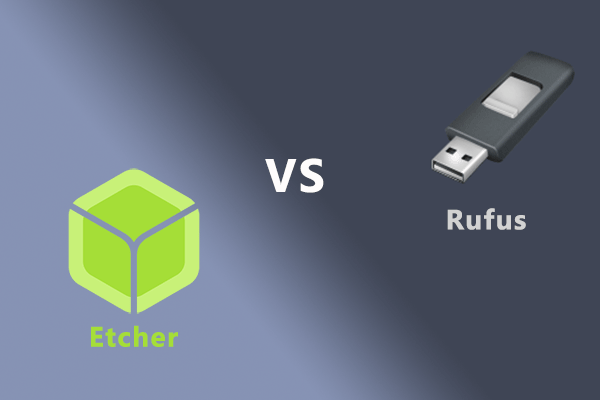
- #UNETBOOTIN VS ETCHER INSTALL#
- #UNETBOOTIN VS ETCHER SOFTWARE#
- #UNETBOOTIN VS ETCHER ISO#
- #UNETBOOTIN VS ETCHER DOWNLOAD#
Especially the Windows ISOs aren't, so the method above, which we call "DD Mode", cannot be applied all the time. Now, once you managed to clear the drive, write the data, and made sure that nothing should have been able to modify it behind your back, then you "should" be able to rely on the makers of the image to have sorted the USB boot, so your job is done (or at least, if it doesn't work, it's not your issue). Also, you may have to work around some Windows own quirks ( quirk #2, mostly seen with Windows 10), where Windows will prevent you to write whatever you want unless you first cleared the drive properly (and by properly, Microsoft means using one of the 3 methods that are supposed to clear the partition tables and whatnot, but that are temperamental enough so that only one tends to work as expected). except ( quirk #1) it also first needs makes sure that there doesn't exist another process that is currently trying to access the drive in write mode, since, to reliably write to the drive, you really don't want to leave the door open for something else to also have kept some write access opened, as there is no telling how they might arbitrarily change the data you just wrote behind your back, and screw up the boot.
#UNETBOOTIN VS ETCHER ISO#
If the source is a DD (pure disk image) or ISOHybrid image (mixed ISO and disk image), then this is the simplest case: Rufus does write it, bit for bit, without any conversion, onto the USB drive. Well, that varies a lot depending on the type of source image you have and type of computer you are trying to boot.

Glad you asked, because a lot of people seem to think an utility like Rufus doesn't do much ( "Why use Rufus when you can just use diskpart ?"), and fail to realize that there is usually a lot more happening behind the scenes because of all the many quirks that are inherent to what can mostly be described as trying to fit a round peg (an ISO image) into a smaller square hole (a USB drive). This tool has a final checkpoint, and can be recommended.(Obligatory: Thank you very much for the gold, kind stranger!) If you want to use the cloning method from Windows or MacOS, the instructions at the Tails web page recommend Balena Etcher, which is a cloning tool. An advantage with Disks is that it is already there as a standard tool in many Linux distros (including Ubuntu).

This tool has a final checkpoint, and can be recommended (but I think it is more difficult to use for this purpose compared to mkusb). If you want to use the cloning method from Linux (not specifically Ubuntu), the instructions at the Tails web page recommend 'Disks' alias gnome-disks.
#UNETBOOTIN VS ETCHER INSTALL#
If you want to use the cloning method from Ubuntu, I suggest that you use mkusb, which 'wraps a safety belt' around dd: There is help to identify the target drive (the USB drive), and there is a final checkpoint, so that you can double-check, that you will install to the correct target drive. For this reason many people use the nickname 'Data Destroyer'. This tool is risky, because it does what you tell it to do without any question, even if you overwrite the internal drive with your family pictures and other valuable data. I browsed the instructions for installing Tails from Ubuntu, and saw that they recommend using dd, which is a cloning tool. You may want to look at one of the sub-pages and follow some links. The following link will give you more alternatives as well as more details, Unetbootin is one alternative, and there are versions for Ubuntu, Windows and MacOS.
#UNETBOOTIN VS ETCHER SOFTWARE#
But many people (and I am one of them) recommend that you use some dedicated software because it makes the process safer and easier. You need some software to create a live operating system in a USB drive, and you can use software that is included in your current system. In order to make the USB drive boot and run a live system.
#UNETBOOTIN VS ETCHER DOWNLOAD#
You can download an iso file or img file with a live operating system, in your case Tails, via your standard web browser, but it does not work directly from the downloaded file.


 0 kommentar(er)
0 kommentar(er)
